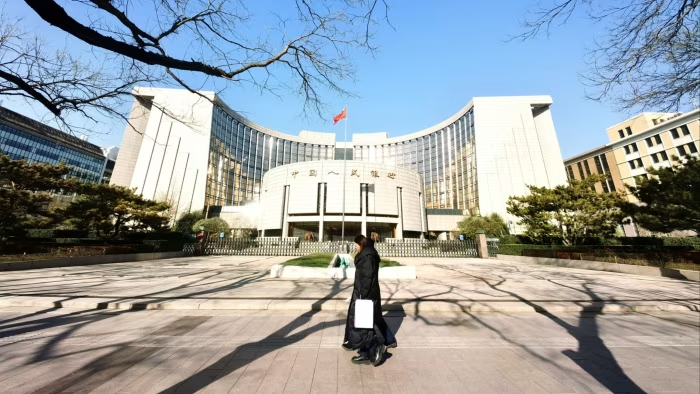Geopolitical rivalries have reshaped the global economy and have led to a resurgence of trade sanctions worldwide (Mohr and Trebesch 2025, Clayton et al. 2023, 2024). One common form of sanction is the export control, which restricts sales of certain items to specific destinations, usually geopolitical rivals. The stated purpose of export controls is to constrain the technological progress and military capacity of rivals. However, a key question surrounds such policies: do they inadvertently spur domestic innovation in rivals? In this column and a recent working paper, we bring granular firm-level evidence from China to this debate (Liu et al. 2025).
We study the ‘China Military Catch-All Rule’, implemented in 2007 by the US Bureau of Industry and Security, which tightened export rules for certain dual-use items to China. When first proposed, the policy covered 77 HS six-digit categories; after an inter-agency review, 18 were removed. We exploit this change to estimate the policy’s causal effects on imports and innovation. Our baseline difference-in-differences strategy compares firms that imported controlled items before 2007 with firms that imported only the excluded items, which serve as our control group. We corroborate our results with propensity-score matching and synthetic difference-in-differences. To trace both trade and innovation responses, we link transaction-level Chinese customs data, firm surveys, value-added tax (VAT) invoice data on interfirm linkages within China, and the universe of Chinese patent applications.
Large and persistent declines in controlled imports
We find that the policy generated an immediate contraction in targeted trade (see Figure 1). Relative to control firms, pre-period importers of controlled goods were 18 percentage points less likely to import those goods from the US after 2007. The value of such imports fell by roughly 89% from the pre-period mean. Substitution from the rest of the world only partly offset the loss: the probability of importing controlled goods from any foreign source fell by about ten percentage points, and import value dropped by roughly 55%. Event-study estimates show a sharp break in 2007 that persists thereafter.
Figure 1 Response of Chinese firm imports to export controls
Notes: The specification includes firm fixed effects, county-by-year fixed effects, and interactions of pre-period firm characteristics with year fixed effects. The pre-period characteristics include average pre-2007 firm sales growth, R&D spending, patent counts, and inventor counts. Standard errors are clustered at the firm level. The bars represent 95% confidence intervals. Source: Liu et al. (2025), Figure 2.
Exposed firms responded with a broad surge in innovation
Firms exposed to the export controls substantially increased innovation activity (see Figure 2). Compared to firms in the control group, they were 3.6 percentage points more likely to report any R&D spending, and their R&D outlays rose by about 49%. They were also 2.8 percentage points more likely to file any patent, with total applications up by about 41%. The innovation response was broad: patents related to controlled technologies rose by about 65%, while patents on other topics rose by about 42%. The number of active inventors at a firm increased by about 30%. These effects emerged quickly after 2007 and grew over time, indicating a persistent shift. The aggregate response is driven by non-state-owned firms.
Figure 2 Response of Chinese firm innovation to export controls
Notes: The specification includes firm fixed effects, county-by-year fixed effects, and interactions of pre-period firm characteristics with year fixed effects. The pre-period characteristics include average pre-2007 firm sales growth, R&D spending, patent counts, and inventor counts. Standard errors are clustered at the firm level. The bars represent 95% confidence intervals. Source: Liu et al. (2025), Figure 3 (a) and (b).
Exposed upstream suppliers increased innovation in sanctioned domains
We also examine upstream domestic suppliers, defined as firms that sold controlled products to treated firms before 2007. We identify suppliers of treated and control firms by leveraging firm-to-firm relationships from China’s VAT invoice database. Treated suppliers were 4.4 percentage points more likely to file any patent in controlled domains, and their related patent counts rose by roughly 360% relative to baseline. Patenting in other topics did not increase significantly. Thus, while directly exposed firms innovated broadly, upstream suppliers concentrated innovation specifically in the sanctioned technologies. These results highlight the importance of production-chain spillovers in the innovation response to export controls.
Conclusion
A growing literature studies how export controls matter for issuing countries. For example, Crosignani et al. (2024) show that US export controls hastened financial and real decoupling from Chinese firms: US suppliers saw lower stock returns, reduced bank lending, weaker profitability, and job losses. Other work shows how sanctions affect third countries. For example, US export controls on China prompted Japanese multinationals to exit the Chinese market; US Entity List sanctions on Huawei led Japanese suppliers to export less to China.
By contrast, much less is known about how export controls affect the targeted economies. Recent work by Alfaro et al. (2025) finds that China’s 2010 rare-earth export quotas induced alternative supply and downstream innovation worldwide, while Egorov et al. (2025) document how post-2022 export sanctions disrupted production and supply chains in Russia, especially in strategic sectors. Our study complements this emerging literature by providing evidence on how a destination-specific export control can stimulate innovation within the targeted country itself.
Overall, our results provide new empirical evidence on a key trade-off inherent to export controls as a geopolitical instrument. In the short run, they reduce the target’s access to critical inputs. Yet controls can also spur domestic innovation, and our results show that this response is economically meaningful in magnitude and persistence. As policymakers deploy export controls, they will need to weigh the short-run benefits against the long-run costs to ensure that the policies do not create the very problem they were intended to prevent.
References
Alfaro, L, H Fadinger, J Schymik and G Virananda (2025), “Trade and Industrial Policy in Supply Chains: Directed Technological Change in Rare Earths”, NBER Working Paper 33877.
Clayton, C, M Maggiori and J Schreger (2023), “A Framework for Geoeconomics”, Working Paper.
Clayton, C, M Maggiori and J Schreger (2024), “A Theory of Economic Coercion and Fragmentation”, Working Paper.
Crosignani, M, L Han, M Macchiavelli and A F Silva (2024), “Geopolitical Risk and Decoupling: Evidence from US Export Controls”, Working Paper.
Egorov, K, V Korovkin, A Makarin and D Nigmatulina (2025), “Trade Sanctions”, Available at SSRN 5404040.
Fukao, K and I Deseatnicov (2025), “US export controls and the restructuring of global value chains: An analysis of Japanese multinationals’ exits from China”, VoxEU.org, 14 February.
Hayakawa, K and K Ito (2025), “The ripple beyond borders: Indirect effects of US export controls on Japanese firms”, VoxEU.org, 1 August.
Liu, X, Y Liu, A Makarin and J Wen (2025), “Export Controls and Innovation in Sanctioned Countries”, CEPR Discussion Paper 20690. https://cepr.org/publications/dp20690
Mohr, C and C Trebesch (2025), “Geoeconomics”, Annual Review of Economics.










